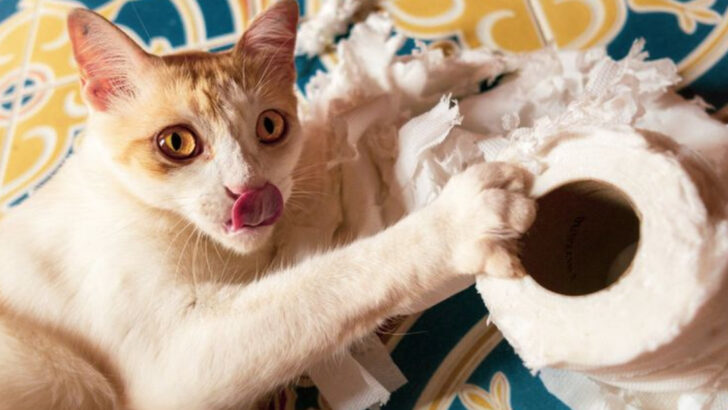Cats are weird. Gloriously, unapologetically weird.
One minute they’re asleep in a loaf shape, the next they’re sprinting across the room like they’ve seen a ghost.
They knock things off shelves just to watch them fall.
They scream at closed doors.
They stare at invisible objects like tiny paranormal experts.
If you’ve ever wondered whether your cat is broken — you’re not alone. But the truth is, most of these maddening little habits are totally normal.
Quirky? Yes.
Irritating? Sometimes.
But abnormal? Not even close.
Let’s break down the feline behaviors that can test your patience — and prove your cat is exactly as delightfully strange as they’re supposed to be.
Kneading
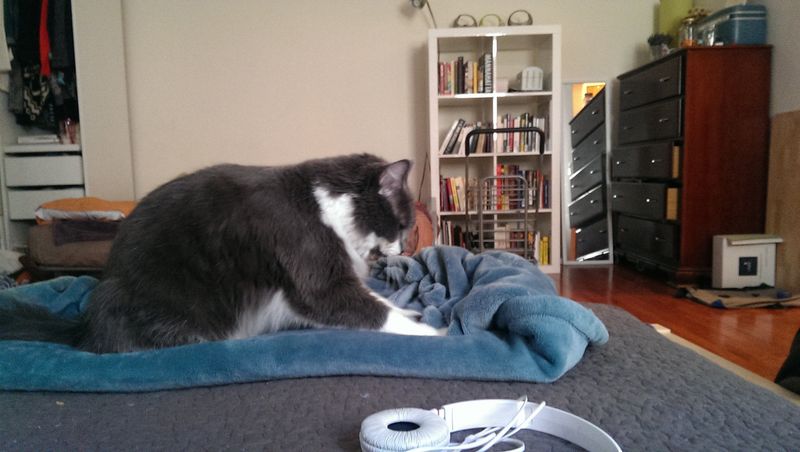
With paws moving rhythmically, cats knead soft surfaces like blankets or human laps. Why? It’s a comforting behavior rooted in their kittenhood, when they kneaded their mother’s belly to stimulate milk flow. As adults, this habit often accompanies purring, indicating contentment and safety.
Kneading may also mark territory through scent glands in their paws, subtly claiming their domain. While it might feel like a mini-massage, those sharp claws can be a surprise! Regular nail trims can minimize discomfort.
Did you know? Some cats even knead in their sleep, dreaming of their carefree kitten days.
Chasing Shadows
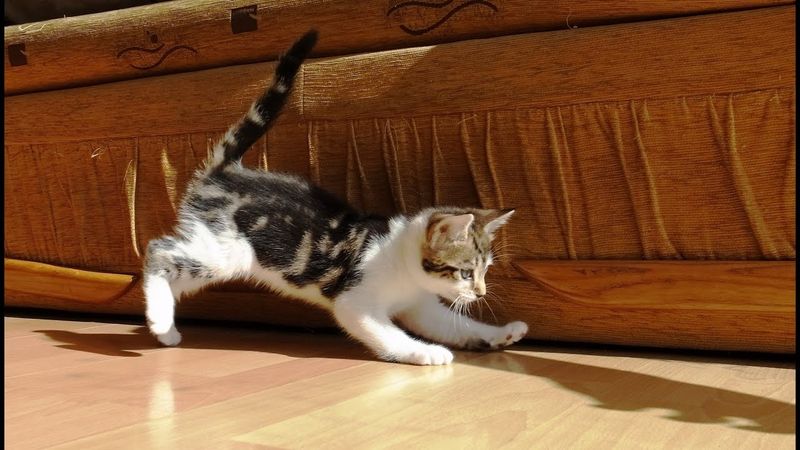
Ever notice your cat darting across the room with eyes locked on an invisible adversary? They’re likely chasing shadows! This playful behavior taps into their instinctive hunting skills, engaging their minds and bodies.
Shadow chasing can be a fun game, but too much focus might indicate boredom or lack of stimulation. Ensure plenty of toys and interactive playtime to keep your feline entertained.
Fun fact: Cats’ eyes are optimized for detecting movement, making them particularly adept at spotting even the most elusive shadows.
Head Bumping
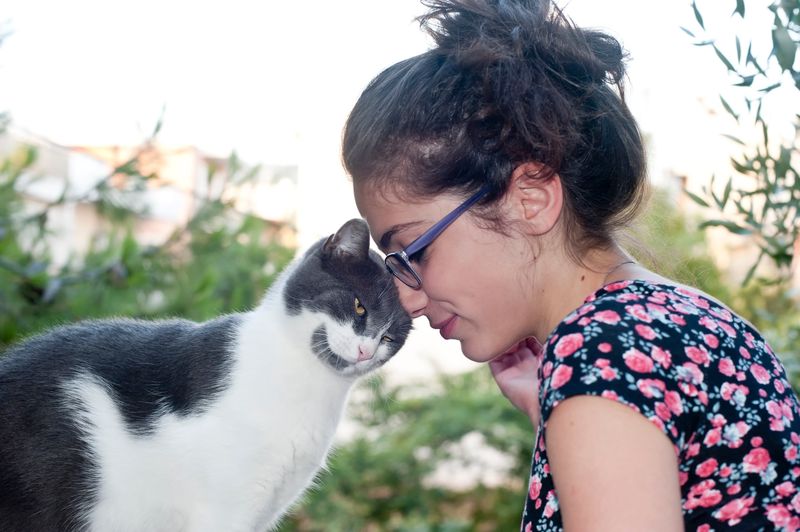
With a gentle nudge, cats express affection through head bumping, or “bunting.” More than just a cute gesture, it’s a sign of trust and bonding. Scent glands located on their heads mark you as “theirs,” a high compliment in the feline world.
This behavior strengthens social bonds, with the added benefit of spreading their unique scent around the home.
Next time your cat bumps you lovingly, know it’s their way of saying, “You’re special to me.”
Bringing ‘Gifts’

Returning home to find a present from your cat can be puzzling, especially when it’s a less-than-welcome surprise. Known as ‘bringing gifts,’ this behavior is a nod to their hunting roots.
Cats often share prey with their family, and by leaving you a ‘gift,’ they’re including you in their circle. While it might not be to your taste, it’s a bonding gesture from your feline friend.
To redirect this instinct, engage them in regular play that mimics hunting. Who knew sharing could be so primal?
Zoomies
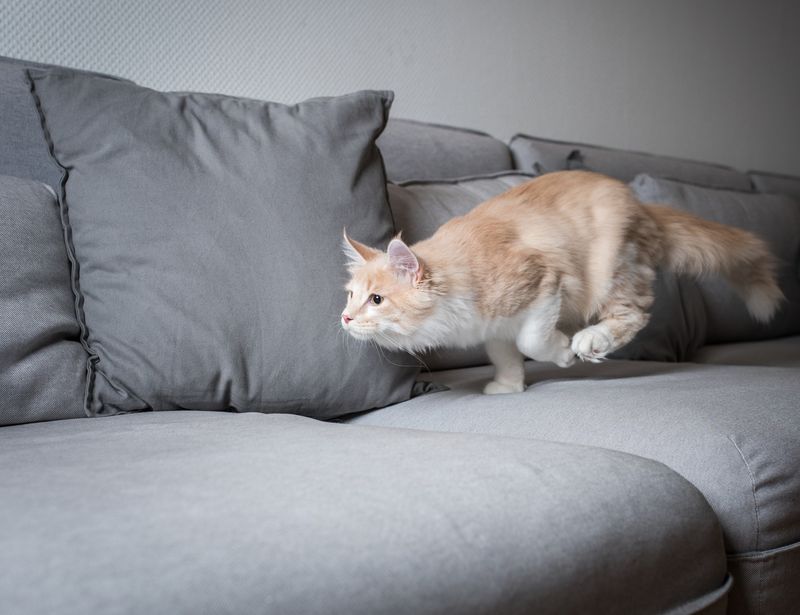
The sudden burst of energy that sees your cat racing through the house like a furry tornado is fondly known as ‘the zoomies.’ This behavior is a release of pent-up energy, often occurring after napping or using the litter box.
Zoomies are a normal part of feline life, providing exercise and mental stimulation. While amusing to witness, ensure your home is safe for these high-speed antics to prevent accidents.
Why not join in the fun with a toy or laser pointer to channel their energy constructively?
Ignoring Toys
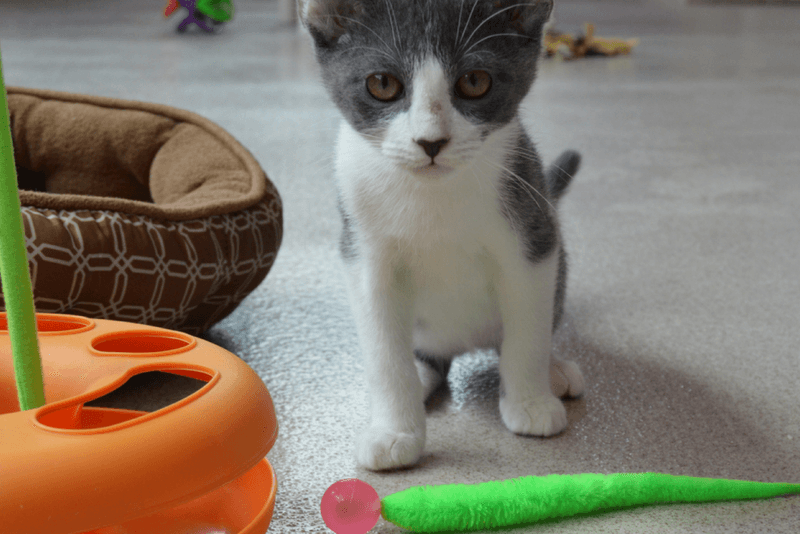
Surrounded by a mountain of toys and yet playing with a piece of string? It’s not uncommon for cats to snub their toys. This behavior might perplex owners, but it reveals their complex nature.
Cats can be selective, preferring toys that engage their hunting instincts or provide mental challenge. Rotating toys regularly can reignite their interest, while interactive play strengthens your bond.
Remember, a cat’s preference can change with mood or age, so variety is key to keeping them entertained. Sometimes, simplicity truly is bliss.
Purring
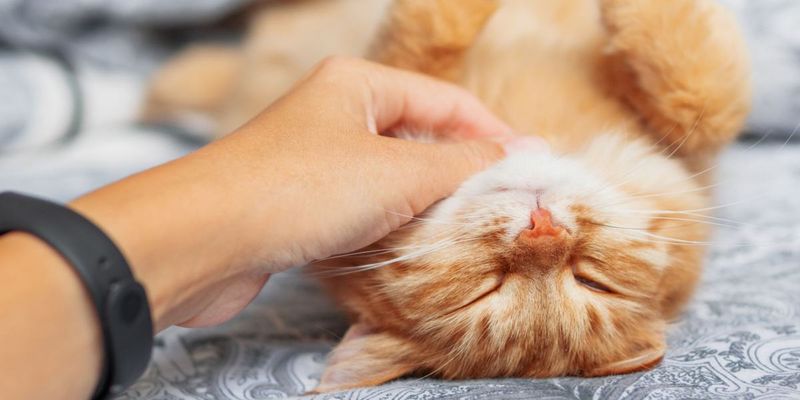
That soothing rumble from your cat is not just a sign of happiness; purring serves multiple purposes. While often associated with contentment, cats also purr to self-soothe during stress or discomfort.
The vibrations may have healing properties, promoting relaxation and even aiding in recovery. Listening to a purring cat can lower human anxiety, creating a calm environment for both parties.
Next time your cat curls up and purrs, enjoy the shared tranquility and know it’s a multifaceted form of feline communication.
Staring Contests
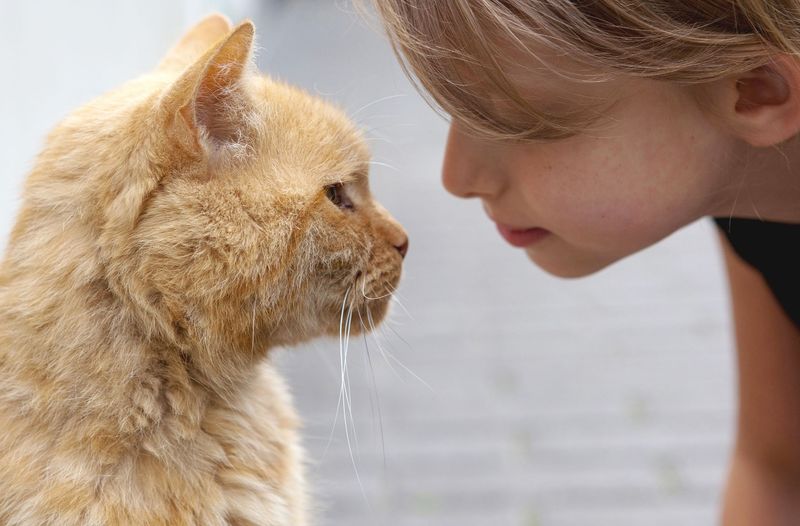
Locking eyes with a cat can feel like a battle of wills. This intense gaze is more than mere curiosity; it’s a blend of hunting instinct and communication.
Cats often stare to gather information or communicate their desires. A slow blink from your feline can signal trust and affection, an invitation to reciprocate.
While some cats are natural diplomats with their stare, others might use it to assert dominance. Understanding this silent language can enhance your bond with your mysterious companion.
Scratching Furniture
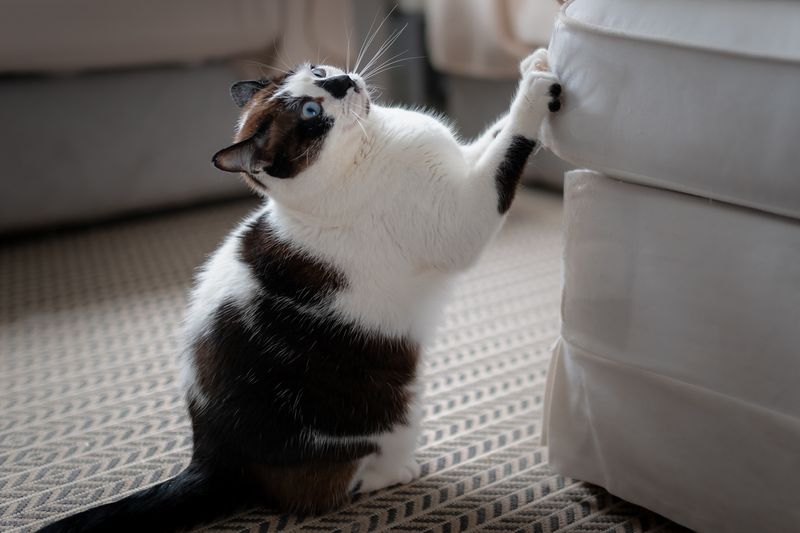
Scratching is a must for cats, serving both physical and social needs. While it can be frustrating for owners, it helps cats shed claw sheaths and mark territory.
Providing adequate scratching posts can redirect this instinct from your furniture to appropriate outlets. Positioning them strategically around the home encourages use, preserving your belongings.
Fun fact: Cats often stretch while scratching, combining two favorite activities into one satisfying ritual.
Drinking from Faucets
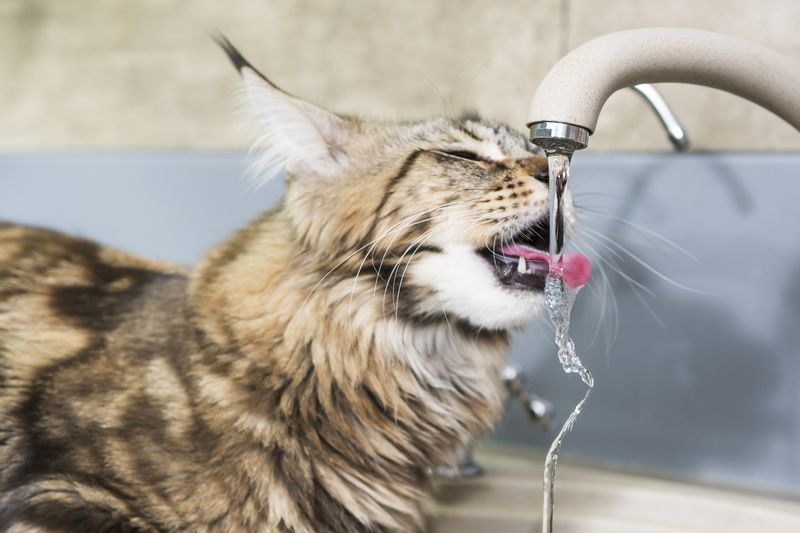
Many cats prefer fresh, flowing water, making faucets irresistible. This behavior taps into their wild instincts, as moving water is often safer and more oxygenated.
While it can be amusing to watch, ensuring a clean water source is essential. Consider a pet fountain to provide constant fresh water, satisfying their preference without waste.
Did you know? Cats have a keen sense of taste and often prefer water at specific temperatures and freshness levels.
Hiding in Boxes
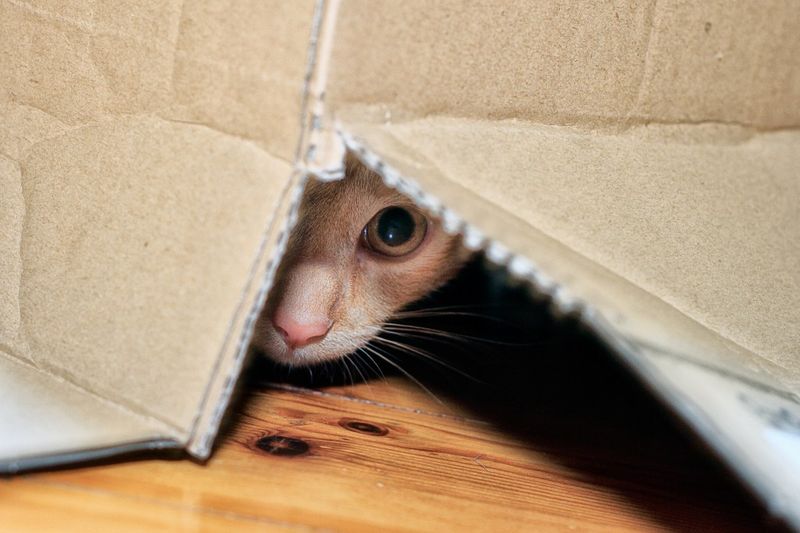
Boxes offer cats a sense of security and adventure, fulfilling their desire for confined spaces. This behavior is a blend of instinct and comfort, providing a perfect hideaway from the world.
Boxes also stimulate a cat’s curiosity and playfulness, offering endless entertainment. By placing boxes strategically, you can create an engaging environment for your feline friend.
Did you know? Cats’ fondness for boxes may also serve as a thermal regulation strategy, trapping body heat for cozy warmth.
Eating Non-Food Items
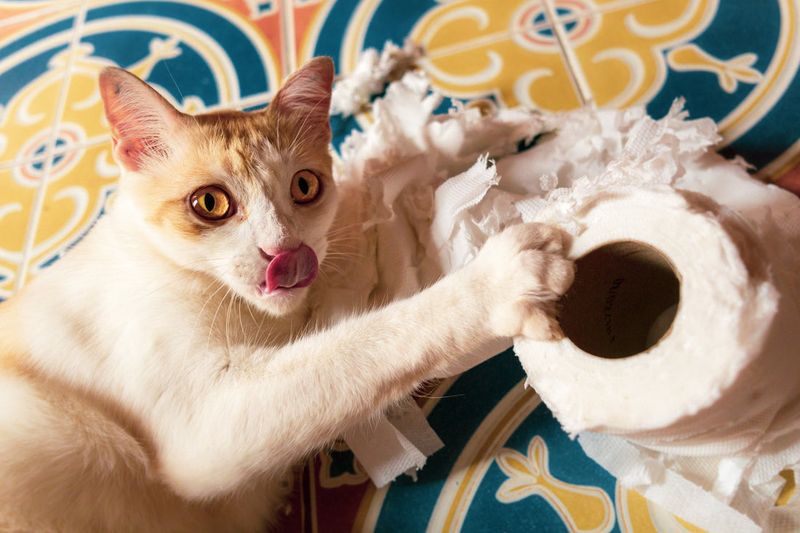
Known as pica, the habit of eating non-food items can be perplexing. Cats may chew on plants, fabric, or plastic out of curiosity or nutritional deficiency.
Monitoring this behavior is crucial, as ingesting certain items can be harmful. Providing safe alternatives, like cat grass, can satisfy their urge to munch without risk.
Why do they do it? Sometimes it’s simply boredom or a way to explore their environment. Keep an eye on your furry friend to ensure their safety.
Sleeping in Odd Places
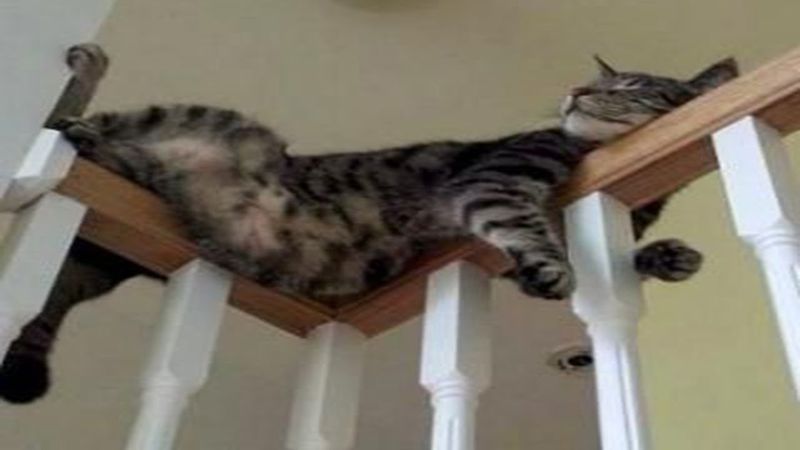
Cats are notorious for choosing the strangest places to sleep, from laundry baskets to the tops of cabinets. This behavior aligns with their need for security and warmth, often finding comfort in unexpected spots.
Their choice can signal a need for solitude or simply a warm, cozy nook. Providing varied sleeping options can cater to their whims, ensuring they have a safe haven.
Did you know? Cats sleep for up to 16 hours a day, often seeking new spots to keep life interesting.
Meowing at Night
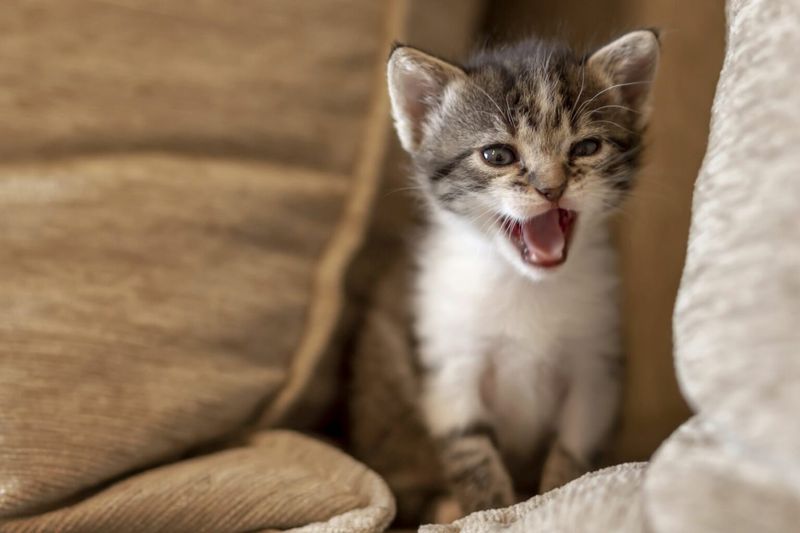
Nighttime meowing can be disruptive, but it’s rooted in natural behavior. Cats are crepuscular, meaning they’re most active during dawn and dusk. This vocalization might signal loneliness, hunger, or a desire to explore.
Understanding the cause can help address it, whether through feeding adjustments or providing nighttime companionship.
Consider a bedtime play session to burn off energy, ensuring a peaceful night for both you and your feline friend.
Climbing Curtains
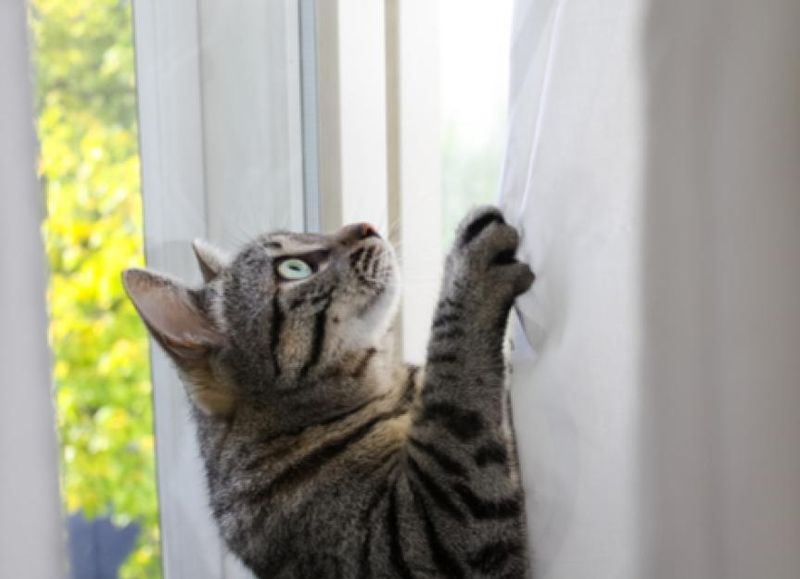
Curtain climbing is a classic cat antic, showcasing their agility and love for heights. This behavior stems from their wild instincts, as climbing offers a vantage point and escape route.
While it can wreak havoc on your drapery, redirecting this energy to cat trees or shelves provides a safe alternative. Encouraging such exploration satisfies their urge to climb without damage.
Did you know? Cats’ retractable claws make them expert climbers, allowing them to ascend with ease and grace.
Chattering at Birds
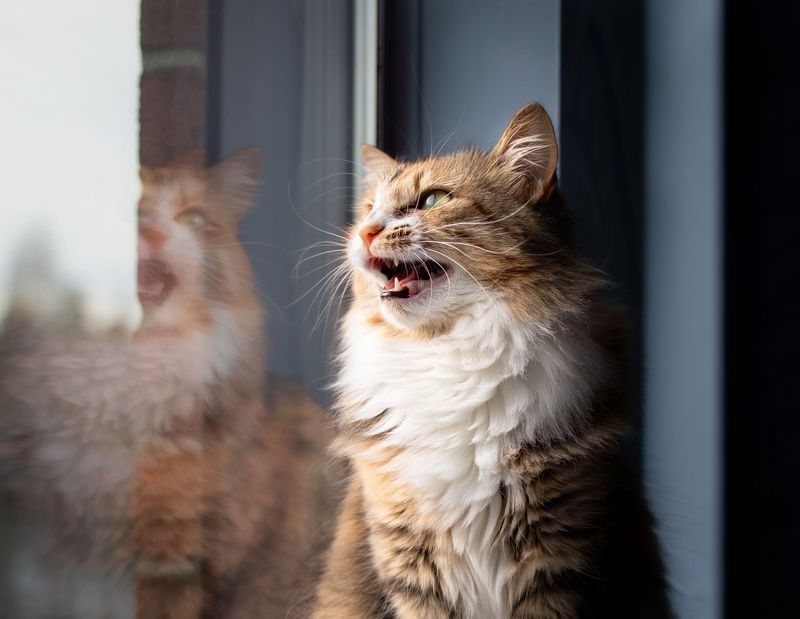
When a cat chatters at birds, it’s a display of predatory excitement. This rapid jaw movement is often accompanied by chirps, revealing their instinctual urge to hunt.
Though they can’t reach their prey, the behavior allows them to express their natural instincts safely indoors. Providing stimulating toys and window perches can keep them engaged and happy.
Fun fact: Some scientists believe chattering might mimic bird calls, an attempt to lure them closer for the catch.

